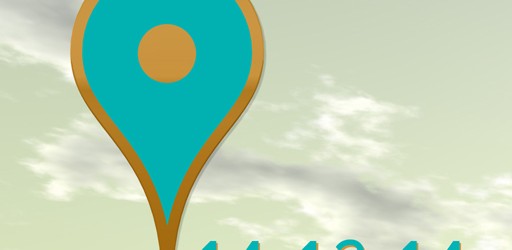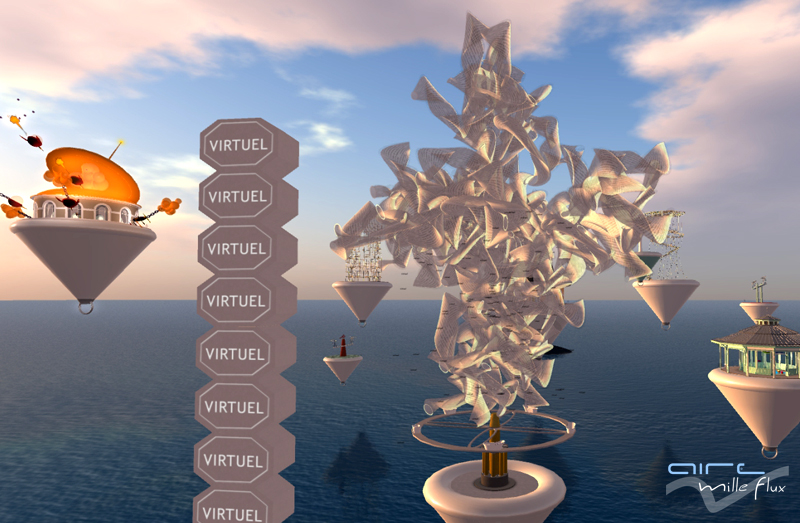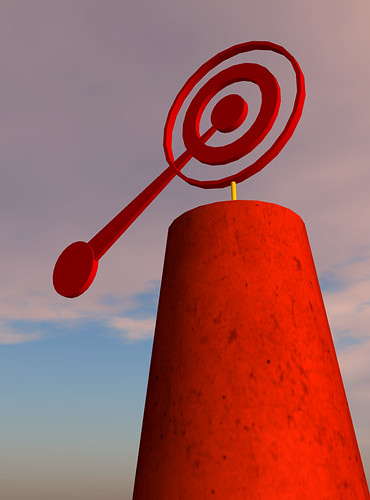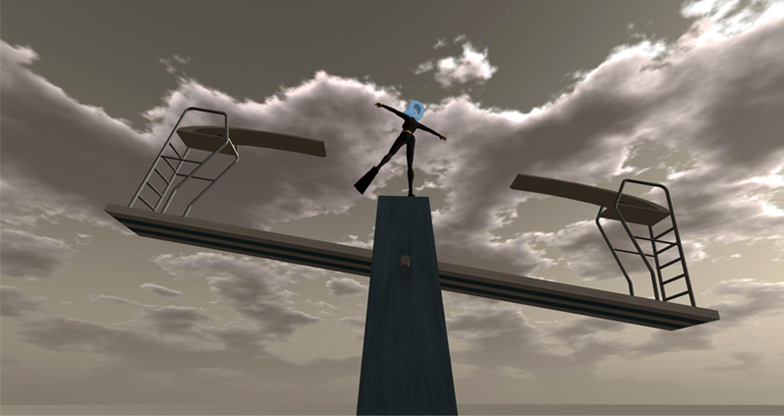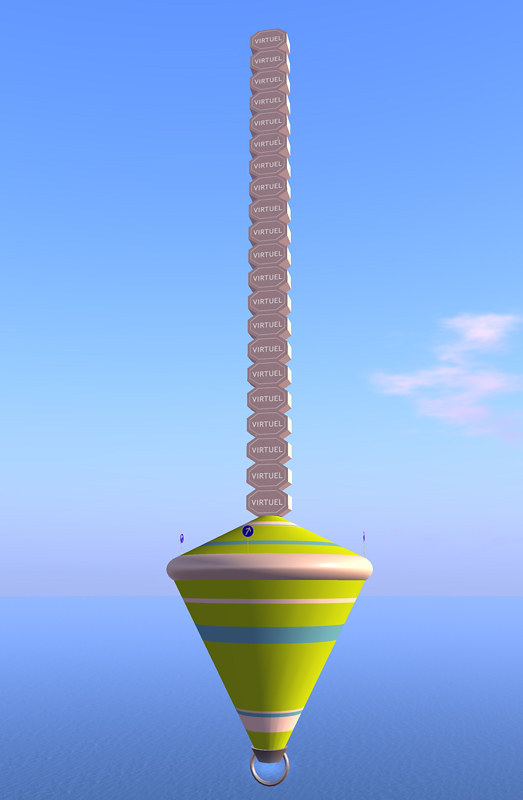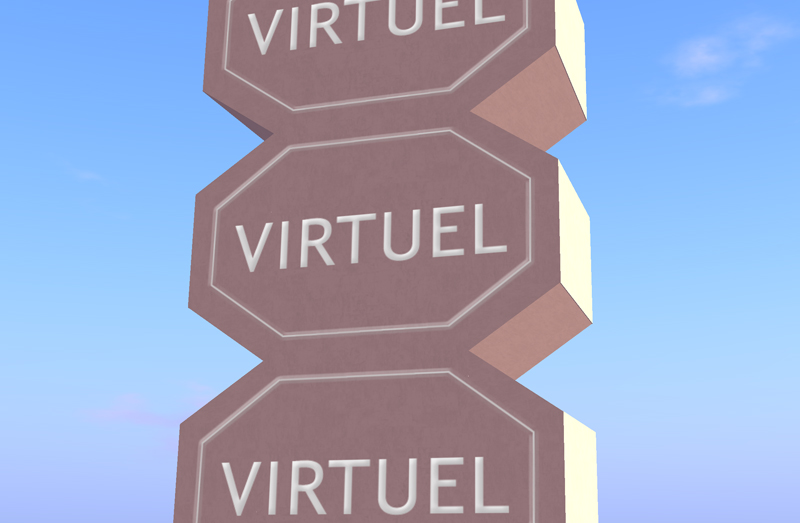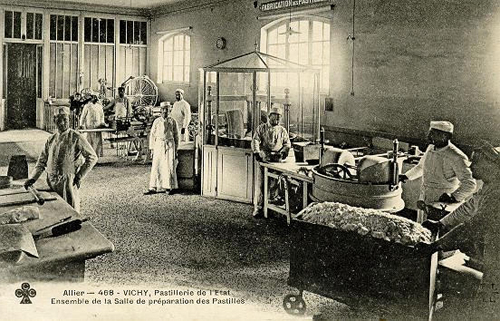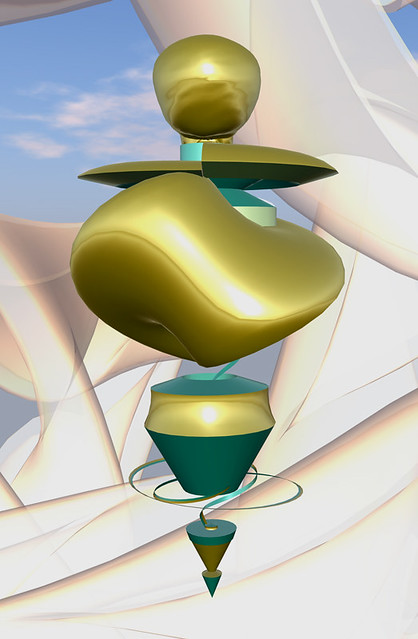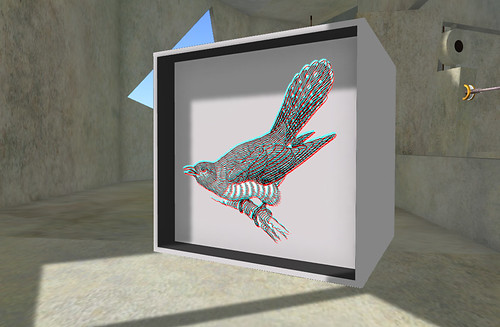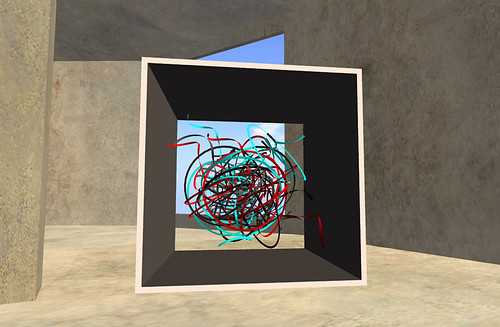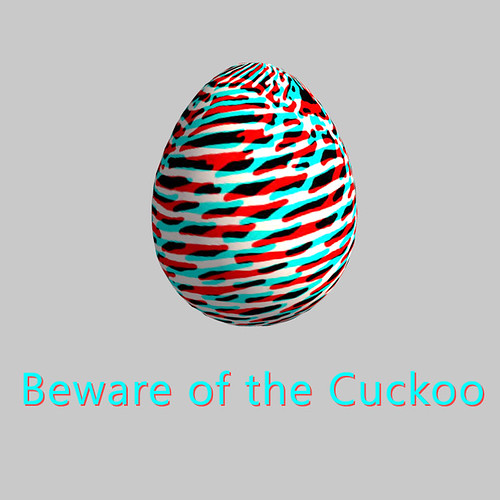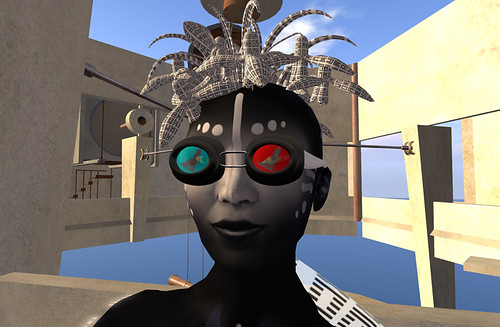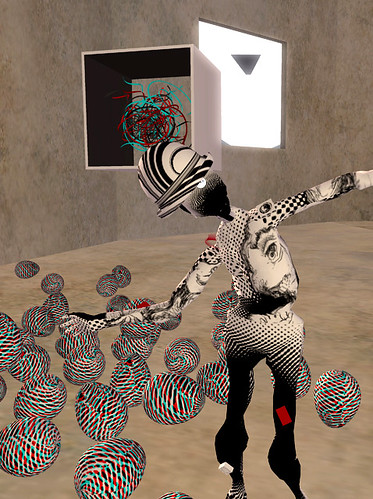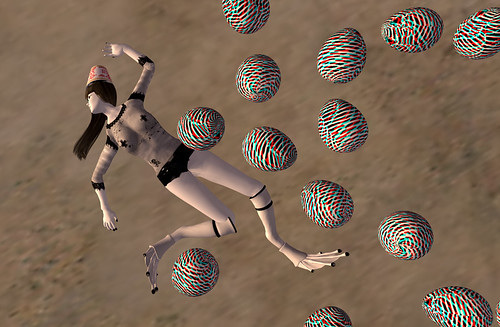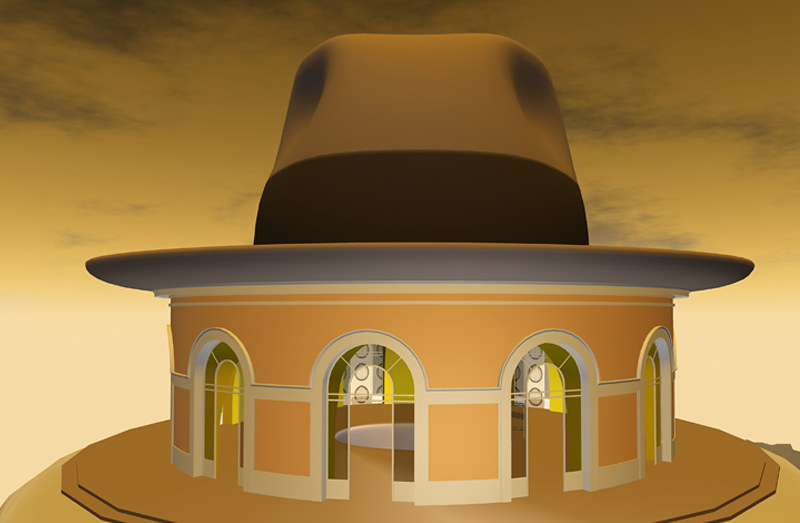


in english below
Dans la tête de Joseph Beuys est une création de Marc Blieux aka Marc Moana, dans le cadre de la création collective Quantic. Elle sera présentée lors du Quantic festival les 7,8,9 juin à Vichy.
Réalisation d’un Pavillon re-source.
1) Visitez le Pavillon
1) Cliquez sur le plongeoir
2) Branchez vos écouteurs
3) Tapez dans la zone de chat les mots suivants, dans l’ordre que vous souhaitez, attendez quelques minutes et faîtes de nouvelles combinaisons avec ces mots.
– énergie
– évolution
– sculpture sociale

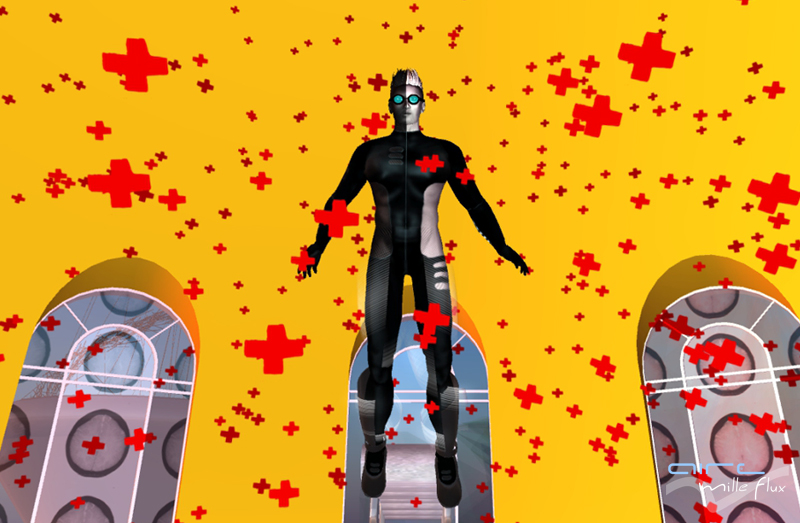
In the head of Joseph Beuys is a creation of Marc Blieux aka Marc Moana, in the context of collective creation Quantic. It will be presented at the festival Quantic 7,8,9 June Vichy.
Realization of a pavilion re-source.
1) Go to the Pavillon
2) Click on the diving
3) Plug your headphones
4) Type in the chat box the following words in the order you want, wait a few minutes and doing new associations with those words.
– sculpture sociale
– energy
– evolution
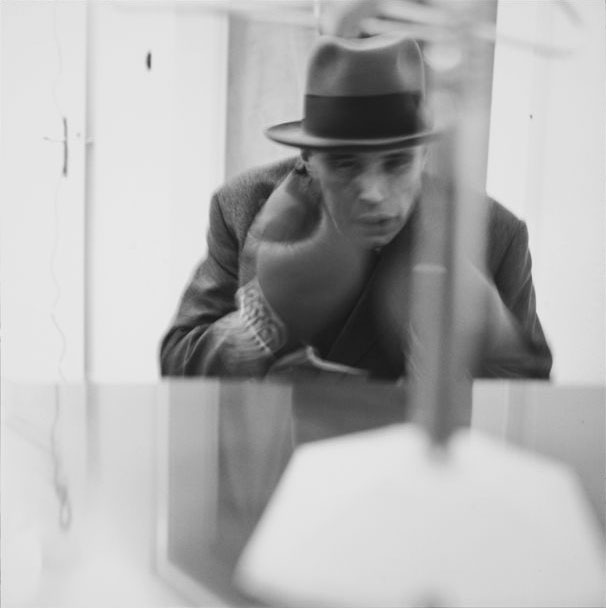
Joseph Beuys (1971, photo by Lothar Wolleh)
(en cours / text in progress)
Joseph Beuys (1921 – 1986) est un artiste allemand qui a produit un nombre de dessins, de sculptures, de performances, fluxus, happening de vidéos, d’installations et de théories, dans un ensemble artistique engagé politiquement.
Un événement va être déterminant pour la suite de sa vie : pilote de la Luftwaffe sur le front russe pendant la Seconde Guerre mondiale, il s’écrase en Crimée. Ce moment est pour lui celui de l’instauration de sa légende personnelle : il semblerait qu’une patrouille allemande l’ait retrouvé et emmené à l’hôpital, mais Beuys raconta que, recueilli par des nomades tartares qui l’avaient nourri de miel, il était revenu à la vie, recouvert de graisse et enroulé dans des couvertures de feutre. Ces éléments qui lui auraient sauvé la vie deviendront récurrents dans sa production artistique (exemple : la Pompe à miel). Il utilisera aussi couramment des matériaux tel que le feutre ou la graisse, en souvenir de cet incident qui sans avoir recours à ces éléments, lui aurait couter la vie.
À partir de 1964, Beuys inclut dans ses installations des matériaux organiques qui lui tiennent à cœur depuis son accident d’avion : le feutre qui isole du froid, la graisse symbole de chaleur et d’énergie, le miel, mais aussi la cire d’abeille, la terre, le beurre, les animaux morts, le sang, les os, le soufre, le bois, la poussière, les rognures d’ongle, les poils. Ces derniers matériaux montrent la réutilisation par Beuys des déchets, non pas pour les magnifier, mais pour les mettre au service de l’art et explorer leur matérialité.
Joseph Beuys s’explique sur l’emploi de trois de ses matériaux de prédilection dans ses objets et lors de ses actions, à savoir la graisse, le cuivre et le feutre : «Oui. J’ai utilisé davantage de matériaux au début et ils étaient plus conventionnels. Mais après la crise, j’ai commencé une nouvelle théorie et j’ai essayé de trouver les matériaux adéquats pour exprimer mes préoccupations avec de nouvelles énergies, avec les problèmes d’énergie en général et ma compréhension de la théorie de la sculpture. J’ai réalisé que nul ne connaissait le réel caractère de ce dont il parlait chaque jour, la sculpture, et que nul ne connaissait la constellation des énergies mises en jeu par la sculpture. Aussi j’ai essayé de pourfendre cette idée conventionnelle : la sculpture ; ce n’était pas pour moi uniquement le fait de travailler dans un matériau spécial mais la nécessité de créer d’autres concepts de pouvoirs de pensée, de pouvoirs de volonté, de pouvoirs de sensibilité. La graisse fut par exemple pour moi une grande découverte car c’était le matériau qui pouvait apparaître comme très chaotique et indéterminé. Je pouvais l’influencer avec la chaleur ou le froid et je pouvais le transformer par les moyens non traditionnels de la sculpture telle que la température. Je pouvais transformer ainsi le caractère de cette graisse d’une condition chaotique et flottante en une condition de forme très dure. Ainsi la graisse se déplaçait-elle d’une condition très chaotique en un mouvement pour se terminer dans un contexte géométrique. J’avais ainsi trois champs de puissance et, là, était une idée de la sculpture. C’était la puissance dans une condition chaotique, dans une condition de mouvement et dans une condition de forme. Et ces trois éléments, forme, mouvement et chaos étaient de l’énergie non déterminée d’où j’ai tiré ma théorie complète de la sculpture, de la psychologie de l’humanité comme pouvoir de volonté, pouvoir de pensée et pouvoir de sensibilité ; et j’ai trouvé que c’était là le schéma adéquat pour comprendre tous les problèmes de la société. Il y avait aussi, impliqué organiquement le problème du corps social, de l’humanité individuelle, de la sculpture et de l’art en lui-même. J’avais besoin de moyens d’expression. J’avais déjà la graisse. J’avais besoin par ailleurs d’un élément très rapide, porteur d’électricité, ce fut le cuivre. Et puis j’avais besoin d’autre chose pour isoler tel secteur de tel autre et j’utilisai alors le feutre. Ainsi, on pourrait dire que c’était le premier concept sur le plan de l’énergie… mais c’est aussi une sorte d’anthropologie !»
Le travail de Joseph Beuys est un questionnement permanent sur les thèmes de l’humanisme, de l’écologie, de la sociologie. Cela le conduisit à définir notamment le concept de « sculpture sociale » en tant qu’Œuvre d’art totale, énoncée dans les années 1970 avec « Chaque personne un artiste », par l’exigence d’une concertation créative entre la société et le politique. Pour lui «le seul acte plastique véritable, consiste dans le développement de la conscience humaine ».
7000 chênes est une des oeuvres emblématiques de ce travail de sculpture sociale. Réalisée pour la Documenta 7, à Kassel en 1982, Beuys invite chacun à planter un chêne, associé à une colonne en basalt. Ce projet planétaire se continua même après la mort de Beuys en 1986.
Sources Wikipédia

7000 Oaks by Joseph Beuys (Kassel 2003, photo by Keichwa)
Joseph Beuys (12 May 1921 – 23 January 1986) was a German Fluxus, happening and performance artist as well as a sculptor, installation artist, graphic artist, art theorist and pedagogue of art.
In 1942, an event will be decisive for the rest of his life : Beuys was stationed in the Crimea and was a member of various combat bomber units. On 16 March 1944, Beuys’s plane was shot down on the Crimean Front and crashed. Beuys’ subsequent recount (1979) of the event became one of the most controversial aspects of his artistic persona. He claimed to have been rescued from the crash by nomadic Tatar tribesmen, who had wrapped his broken body in animal fat and felt and nursed him back to health.
It is not inconsistent with Beuys’ work that his biography would have been subject to his own reinterpretation; this particular story has served as a powerful myth of origins for Beuys’s artistic identity, as well as providing an initial interpretive key to his use of unconventional materials, amongst which felt and fat were central.
From 1964 on, Beuys used some organic materials which he was attached to since his plane crash : felt that insulates from the cold, fat which is a symbol of warmth and energy, honey and beeswax, soil, butter, dead animals, blood, bones, sulfur, wood, dust, nail trimmings and hair.
This illustrates the fact that Beuys didn’t intend to use these materials in order to recycle them. These last materials show that Beuys was using tailings in order to explore their materiality and to serve art, but not in order to recycle them.
As regards the use of his three favorite materials (fat, copper and felt) Joseph Beuys said : “Yes, I used more materials at the begginging, and they were more conventionnal. But after the crisis, I started a new theory and tried to find materials that were adapted to my new concerns about energies, about energy issues in general and my own vision of the sculpute theory. I realized that no one knew the actual nature of what they were talking about everyday : sculpture. No one knew the dovetailing of the enegies involved in sculpture.
So I tried to slay the coventionnal idea of sculpture. To me, not only was it the fact of working with a specific material, but it was also the need of creating different thought power concepts, different will power concepts, different sensitiveness concepts. For instance, fat was to me a great discovery. This material could seem very chaotic and undetermined. I could influence it with heat and cold, and transform it by some untraditional ways of sculpting, such as temperature.
I could therefore transform the nature of this fat from a chaotic and floating condition to a hard shaped one. Thereby, fat was shifting, in a movement, from a very chaotic condition to a geometric context. I had then tree fields of power, and there stood an idea of what sculpture is. It was power in a chaotic condition, power in a movement condition, and power in a shaped condition.
From these three elements : shape, movement and chaos, I drew my complete theory. This theory is about sculpture, human psychology as a power of will , a power of thinking and a power of sensitiveness. I figured this was a suitable scheme to understand all of the society issues.
There also was the social structure issue, the individual humanity issue, the sculpture and the art issue itself.
I was in need of some means of expression. I already had fat. I also needed an element that could quickly conduct electricity : it was copper. Then I needed something to insulate one part from the other : I used felt.
We may then consider that it was the first concept about energies. But this is also a sort of anthropology.”
Joseph Beuys’ work consisted in a parmenant questionning about humanism, ecology and sociology. It led him to define the “social sculpture concept” as a complete art work.
In the 70’s, it was presented as “ Each person is an artist”, requiring a creative consultation between society and politics.
To Beuys, “the only real art consists in the human consciousness improvement”
7000 oaks is one of the emblematic work from this social sculpting process. It was realized for the Documenta 7, in 1982 in Kassel. Beuys invited everyone to plant an oak tree associated to a basalth column. This global project was to be continued even after Beuys’ death in 1986.
Sources Wikipédia






